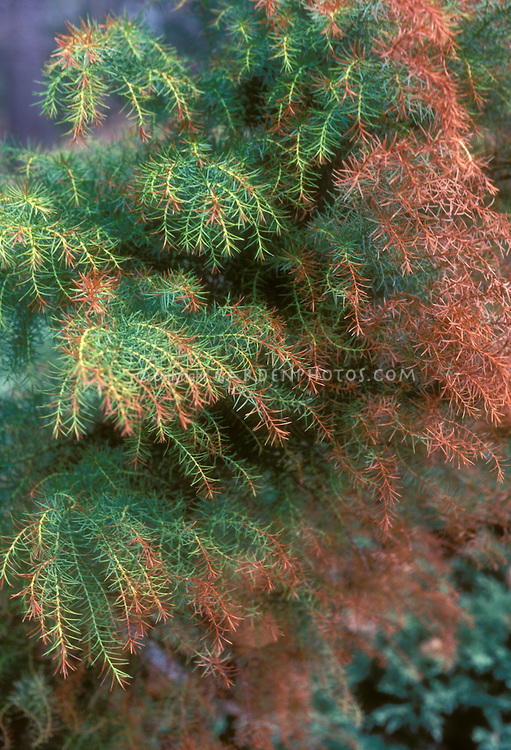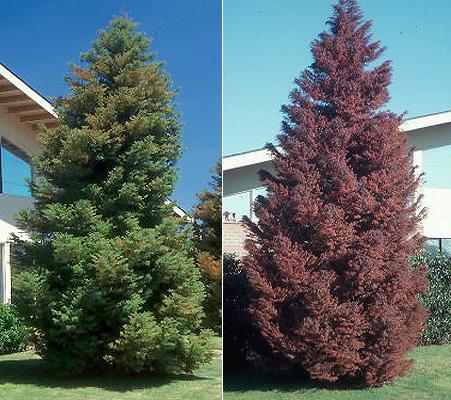Cryptomeria japonica 'Elegans' is a large-growing, broadly columnar selection of Japanese cedar with spreading tiered branches holding seafoam-green juvenile foliage that turns purple with hints of red and orange. Its color changes throughout the year make for unique year-round interest in the landscape. It is known for having weak roots making for many many large specimens canted or leaning over.
After 10 years of growth, a mature specimen will measure 10 to 12 feet (3 - 4 m) tall and 4.5 feet (1.5 m) wide, an annual growth rate of 10 to 12 inches (25 - 30 cm).
This cultivar originated in Japan in the mid-1800s where it is known by the name 'Yawara.' It can be argued that this is the proper cultivar name for this plant were it not for the fact that it's been universally known in the nursery trade worldwide was 'Elegans.' In 1854, English plant collector, Thomas Lobb imported the first plants to the Veitch Nursery, Chelsea and Exeter, United Kingdom. Nelson named the plant in 1866.

